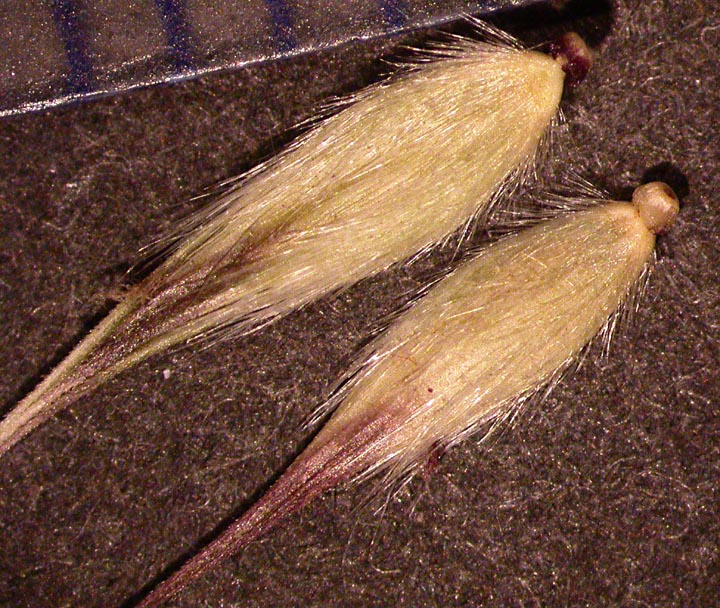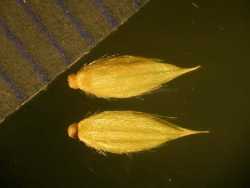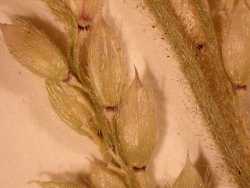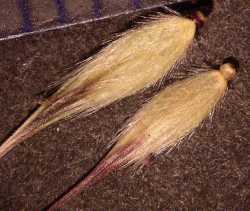Plants annual or perennial; cespitose, sometimes with short rhizomes or stolons, not producing subterranean spikelets. Culms 20-250 cm, erect or decumbent, usually with 2-5 nodes. Sheaths open; auricles absent; ligules membranous, ciliate. Inflorescences terminal, panicles of spikelike branches on elongate rachises; branches with many pedicellate, loosely appressed spikelets, terminating in a spikelet, without stiff bristles or flat bracts, spikelets in pairs, triplets, or solitary, often solitary distally when in pairs or triplets at the middle of the branches; pedicels terminating in a well-developed disk; disarticulation below the glume(s). Spikelets with 2 florets, lower florets usually sterile, upper florets bisexual. Lower glumes typically reduced (sometimes absent) and fused with the glabrous callus to form a cuplike structure; upper glumes lanceolate to ovate, glabrous or variously pubescent, 3-9-veined, unawned or awned; lower lemmas similar to the upper glumes in length, shape, venation, and pubescence, unawned; lower paleas absent to fully developed; upper lemmas lanceolate to ovate, indurate, rugose, dull, glabrous, rounded on the back, veins not pronounced, margins involute; anthers 3; lodicules 2, papery; styles with 2 branches, purple, plumose. Caryopses not longitudinally grooved; endosperm solid. x = 9. Name from the Greek erion, wool, and chloe, grass, a reference to the usually pubescent pedicels and rachises.
Spikelets 1-fld, racemose, very shortly pediceled in 2 rows along one side of a rachis, lance-ovoid or ellipsoid; rachilla-joint thickened, forming a ring- like callus below the second glume, the virtually obsolete first glume adnate to it, the spikelet appearing to be set in a thickened, shallow cup atop the pedicel; second glume and sterile lemma chartaceous, 5-7-veined, usually pilose, similar and subequal or the glume a little the longer; fertile lemma surpassed by the second glume, cartilaginous, finely rugulose or papillate-roughened, usually mucronate or awned, the inrolled margins clasping a palea of similar texture and about equal length; tufted grasses with terminal panicles of several, usually appressed racemes. 25, warm reg.
Gleason, Henry A. & Cronquist, Arthur J. 1991. Manual of vascular plants of northeastern United States and adjacent Canada. lxxv + 910 pp.
©The New York Botanical Garden. All rights reserved. Used by permission.












